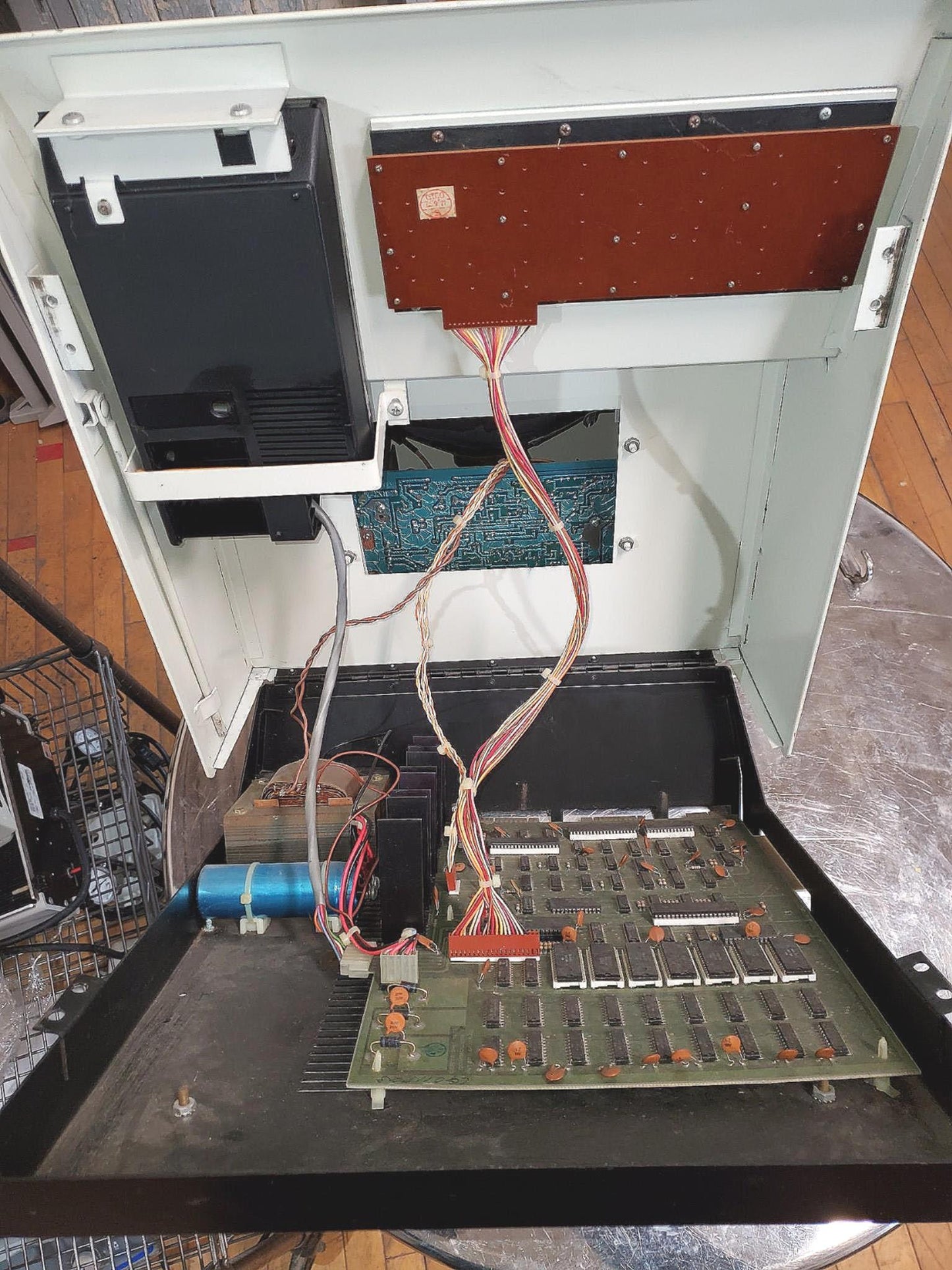COMMODORE PET 2001-8 HALL 9000 COMPUTER & ORIGINAL OPERATION MANUALS FREE SHIP
COMMODORE PET 2001-8 HALL 9000 COMPUTER & ORIGINAL OPERATION MANUALS FREE SHIP
This listing is for a NON Operational Condition COMMODORE PET 2001-8 HALL 9000 COMPUTER PLUS ORIGINAL OPERATION MANUALS as can be seen in the pictures.
This unit came from an estate sale without the Fuse cover and fuse itself so we cannot start it, it may very well be working fine or not, we cannot determine that without the fuse cover, that's why the low starting bid!
FEEL FREE TO CHECK MANUFACTURER's TECHNICAL SPECS FOR THIS VWR DS-500 BY GOOGLING THE FOLLOWING LINK: inexhibit.com/case-studies/computer-design-commodore-pet-2001-1977/
Package 1: 45lbs 23x21x19
Package 2: 29lbs 16x16x13
The PET 2001 can be considered the first all-in-one home computer and, under many aspects, the first commercially successful personal computer ever.
It was based on a MOS 6502 processor (which also powered the Apple II) and equipped with a cassette recorder as a mass memory device, a keyboard with 53 buttons, a 20-button numeric keypad, and a 9-inch monochrome CRT monitor (manufactured by Sony).
The default RAM amounted to only 4 KB; yet, Commodore quickly released a version with 8 KB to improve the performances of the machine.
All elements were grouped into a single massive sheet metal case; overall, the PET’s weight was about 25 pounds.
As usual for many computers of the time, the PET included, along with a minimal Operating System, a programming language pre-installed in ROM: it was a version of BASIC produced by a small company from Albuquerque, called Micro-Soft, and developed by its young co-founder, William Henry “Bill” Gates.
History of computer design: the Commodore PET 2001 (1977)
Probably, the two men behind the Commodore PET 2001 computer – Commodore International’s founder, Jack Tramiel, and the company chief designer, Chuck Peddle – would have preferred to call it HAL 9000.
Indeed, many elements of this famous late-70s PC were somewhat inspired by A Space Odyssey‘s infamous thinking machine; from its evocative three-letter name, to the PET logo Microgramma typeface (the same used by Kubrick for HAL’s graphic interface), to the addition of the number 2001 which, apart from that reference, is totally senseless.
Overall, the PET possibly manifests like no other machine the influence of the aesthetic of cinema on a computer design.
Description
Inventory # 20141
Couldn't load pickup availability
Low stock: 1 left
View full details





























